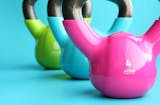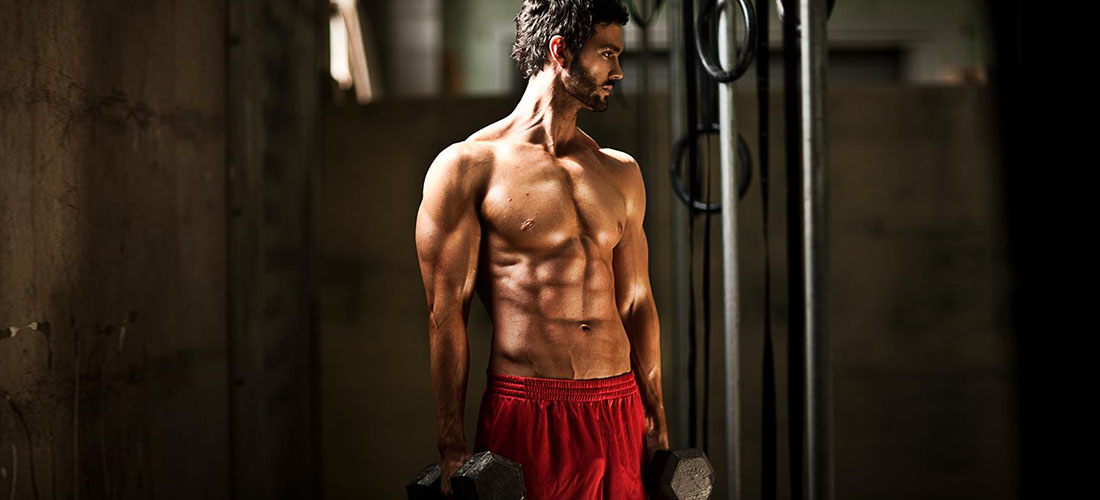There can be two reasons or more that you are reading this article. First, you are new to the gym and have little idea of the gym language. Second, you have been working out for a while but haven’t been able to connect to your female instructor because she speaks only “Gym”. Now that’s bad, isn’t it ? Not being able to talk to that pretty lady [1] without being called “desperate” or something else. Hey you gotta learn this language of workout routines so that you show them you have ample knowledge.
So let’s take our first step to improve our “gym vocabulary” and get a bit technical.
Contents
1. Repetitions
You are being trained by a hot female trainer and she is assisting you in pushing those barbells over your chest. Then she asks how many repetitions you are going to perform. Fortunately you had read this article and so you say 12.
Now a repetition is the number of times you push that barbell above your chest. It is the frequency at which you are working out. There can be 10, 12 or 15 repetitions in a set depending on the weight you choose, all which you perform without a break.
2. Sets
Imagine you are performing dumbbell curls, a great workout for your biceps and this lady just passes by and asks you how many sets. After reading this article, you tell her “I just started, have 3 sets remaining”. Now a set is a number of repetitions. When you perform bicep curls, you push the dumbbell 10, 12 or 15 times before taking a break and that is a set. The number varies from person to person and also the goals the individual is trying to accomplish. To build endurance, one goes for low intensity and high repetitions[2], while to build the muscle mass, one goes for a high intensity and an optimal number of repetitions. Usually the number of sets performed is 3 but can be increased to 4 in case of professional body builders and athletes.
1 Set = 10, 12 or 15 repetitions
3. Forced Reps
When performing bicep curls, there can be a momentary failure of your bicep muscle once you have performed around 12 to 15 reps. Your muscle is no more capable of lifting that weight anymore [3] because it is fatigued. But now your training partner helps you in pulling the weight by adding a little of his energy to extract a few more repetitions from you. According to Arnold Schwarzenegger in his documentary ” Pumping Iron” , this is the period when the muscle is under maximum pressure and so the best way to gain muscle mass [4].
4. Drop Sets
With a Drop set, you achieve the same output which you achieve with Forced reps except you are not assisted by a partner in pulling up the weights. Here all you do is, when your muscle enters the stage of failure, that is when it loses its capability of lifting weights, you throw the 45 pound weight and get a 35 pounds on your barbell and then perform any number of repetitions possible. The whole idea here is to make your muscle workout until it can no longer lift weights.
You might not be able to lift 45 pounds but the muscle is still capable of lifting a 35 and so it hasn’t reached a proper “momentary failure ” yet. This as explained in the above point, makes a lot of sense if you are planning to gain muscles.
5. Burpees
There are various exercises that you can perform to warm your body[5] before your workout session. A proper warm up can prevent injuries[6], lead to less body cramps and evidently provide you with a full range of motion. Burpees are the kind of workout that you need to perform if you need all these. This workout is used during football sessions, a precursor to mixed martial arts training and many others.
Burpees offer you a full body workout where in it exercises your upper body and your lower body at the same time. These form a part of functional training, the army kinda workout. We would definitely suggest burpees to push ups anyday.
Expect a video lesson and more suggestions in a future article.
6. Plank
This workout really means that you are going to take the position of a plank. One of the best exercises for the abdominal muscles and your obliques. Throw away those long sticks which makes you look like an idiot. Try performing planks that can make your abs look like a table with columns and rows. These are very effective when performed with the right posture and technique. You can perform normal planks or side planks.
After updating your dictionary it’s time to hit gym like a professor of gym with all the gym lingo well known to you. But before you hit gym to impress “the hot gym trainer” read these beginner’s guide to weight training to be more well known in your gym arena.
Also read:
1. 5 Common Mistakes Beginners Make While Getting Started With Training
2. The Beginner’s Guide To Pack Abs & Core
References: [1] Maihan B. Vu, DrPH, MPH, Dale Murrie, MAT, Vivian Gonzalez, MEd, and Jared B. Jobe, PhD. Listening to Girls and Boys Talk About Girls’ Physical Activity Behaviors. Health Educ Behav. Author manuscript; available in PMC 2008 June 18. Published in final edited form as: Health Educ Behav. 2006 February; 33(1): 81–96. doi: 10.1177/1090198105282443. [2] Goto K, Nagasawa M, Yanagisawa O, Kizuka T, Ishii N, Takamatsu K. Muscular adaptations to combinations of high- and low-intensity resistance exercises. J Strength Cond Res. 2004 Nov;18(4):730-7. [3] S C Gandevia and S L Kilbreath. Accuracy of weight estimation for weights lifted by proximal and distal muscles of the human upper limb. J Physiol. 1990 April; 423: 299–310. [4] C A Williams. Effect of muscle mass on the pressor response in man during isometric contractions. J Physiol. 1991 April; 435: 573–584. [5] Shellock FG, Prentice WE. Warming-up and stretching for improved physical performance and prevention of sports-related injuries. Sports Med. 1985 Jul-Aug;2(4):267-78. [6] Safran MR, Seaber AV, Garrett WE Jr. Warm-up and muscular injury prevention. An update. Sports Med. 1989 Oct;8(4):239-49.






Comments are off this post!